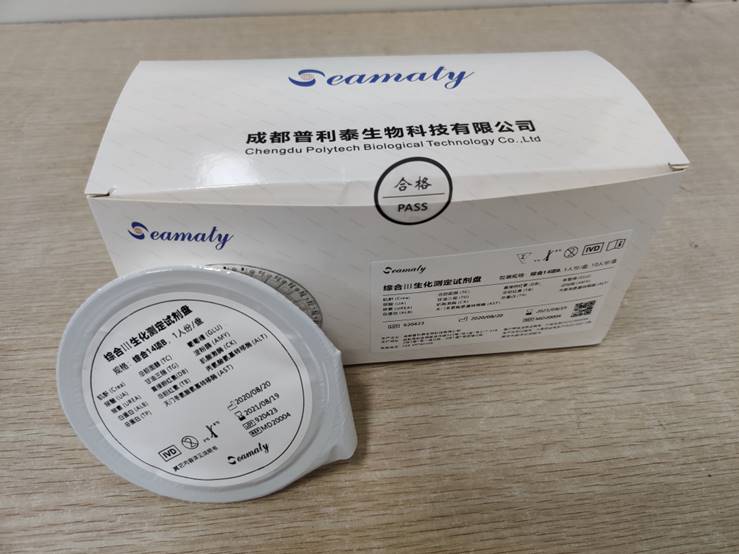What is a chemistry analyzer
A chemistry analyzer/biochemistry analyzer is an instrument that uses the photoelectric colorimetric principle to measure a specific chemical composition in body fluids. It is a kind of blood chemistry analyzer machine, which can help doctors to diagnose kidney function, liver function, blood sugar and lipid, electrolyte, coagulation, etc. by detecting the content of chemical substances in blood. chemistry analyzer machine provides the basis for doctors' diagnosis and treatment.
The chemistry analyzer principle
So, what is the working principle of biochemistry analyzer? The fully automated biochemistry/chemistry analyzer is actually an optical analysis instrument. The first generation chemistry analyzer machine is essentially a spectrophotometer. Later on, semi-automatic biochemical analyzers were gradually introduced. By now. Fully automatic biochemical analyzer has been used very widely. The chemistry analyzer machine is based on the selective absorption of light by a substance, i.e. spectrophotometry. The principle of chemistry analyzer is still based on Beer's law.
The working principle of a biochemistry analyzer is based on the detection of various chemical reactions that occur between the biological sample and specific reagents.
The analyzer typically works in the following steps:
-
Sample preparation: The biological sample is prepared by centrifuging it to remove any cells or debris, and then diluted or treated with specific reagents to facilitate the chemical reactions.
-
Sample analysis: The prepared sample is introduced into the analyzer, which contains a series of channels or cuvettes. Each channel contains specific reagents and enzymes that react with the sample to produce a detectable signal, usually a change in color, absorbance, or fluorescence.
-
Detection and measurement: The analyzer measures the signal produced by each channel and compares it with a calibration curve to determine the concentration of the target analyte in the sample. The calibration curve is generated by analyzing known concentrations of the analyte under similar conditions.
-
Data analysis: The analyzer generates a report that includes the results of each analysis, including the concentration of each analyte and any relevant reference ranges or interpretation.
Overall, the working principle of a biochemistry analyzer is based on the interaction between the biological sample and specific reagents, and the detection and measurement of the resulting chemical reactions. This process allows for the precise and accurate measurement of various biochemical parameters in biological fluids, which can aid in the diagnosis, monitoring, and treatment of various diseases and conditions.
How does a chemistry analyzer work?
-
The monochromator divides the complex color light from the light source into monochromatic light.
-
The monochromatic light of a specific wavelength passes through a colorimetric cell containing a sample solution.
-
The photoelectric converter converts the projected light into an electrical signal and sends it to the signal processing system for analysis.
-
The computer then processes, calculates, analyzes and saves the measurement data according to the working mode selected by the user.
-
The printer prints out the corresponding results at the same time.
-
Finally, after measuring each group of samples, the cuvette and pipeline are clear.
Auto chemistry analyzer machine
As mentioned earlier, the chemistry analyzer has gone from spectrophotometer to semi-automatic biochemistry analyzer, and now to Auto chemistry analyzer machine.
With the Auto chemistry analyzer machine, the entire process from sample addition to result is done automatically. The operator only needs to place the sample on the specific position of the analyzer and select the program to start the instrument to take the test report.
The basic structure of auto chemistry analyzer machine is the same as that of other in vitro diagnostic instruments.
The basic structure includes liquid, gas, electrical and mechanical drive systems. The liquid and gas paths are mainly related to the sampling of probes, sample addition, reagent operation and waste liquid disposal, while the optical path and circuitry are related to signal detection and comprehensive information processing, and the mechanical drive system runs through the entire process of testing and analysis.
Chemistry analyzer brands
Since Technicon successfully produced the world's first fully automated biochemistry analyzer in 1957, various models and functions of fully automated biochemistry analyzers have emerged. The major global brands of Auto Chemistry analyzer include Beckman, Hitachi, Toshiba, Roche, Abbott, Siemens, Johnson & Johnson Mindray, Seamaty, etc. Click to explore the top 9 clinical chemistry analyzers suitable for small to mid-sized laboratories in 2023.



